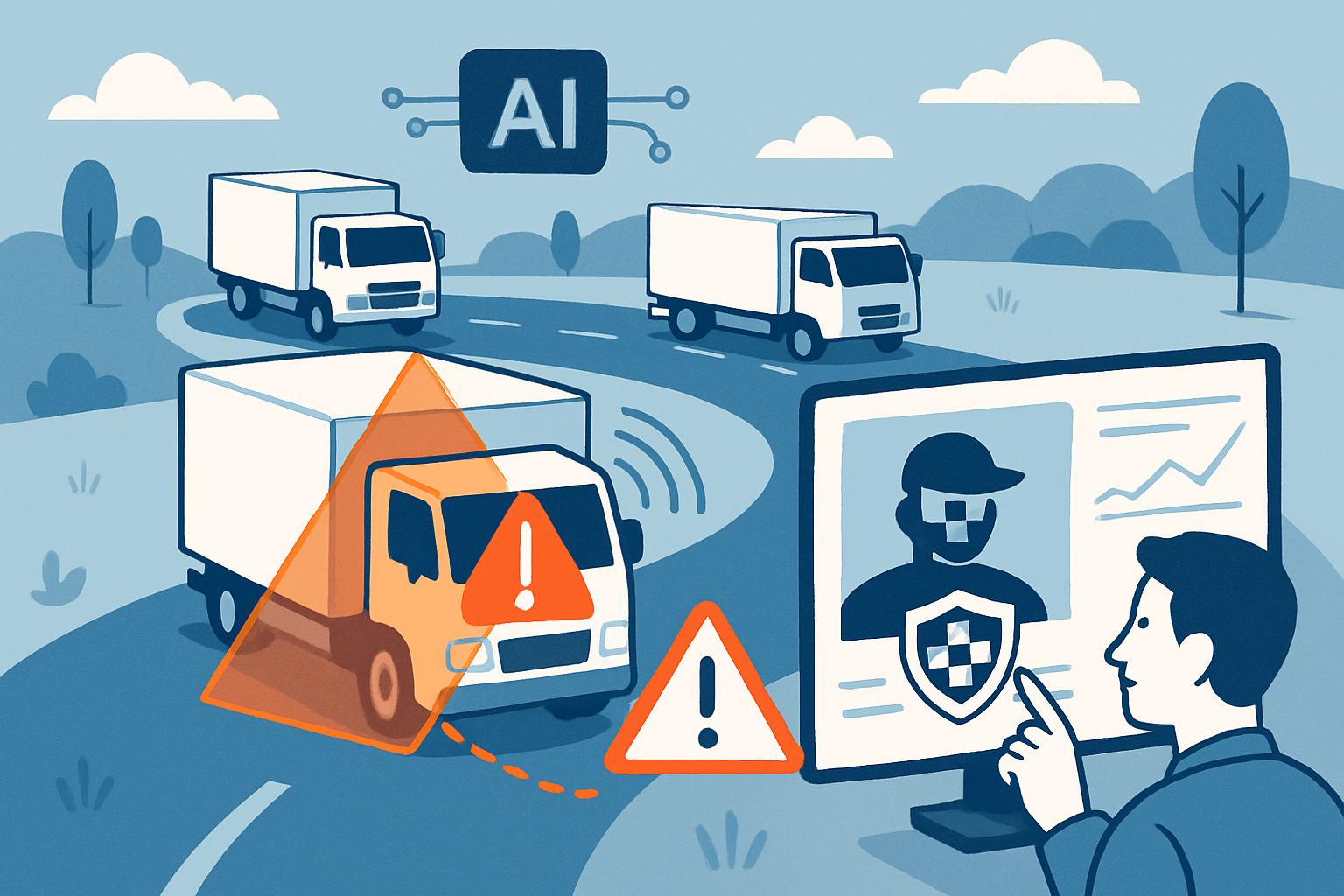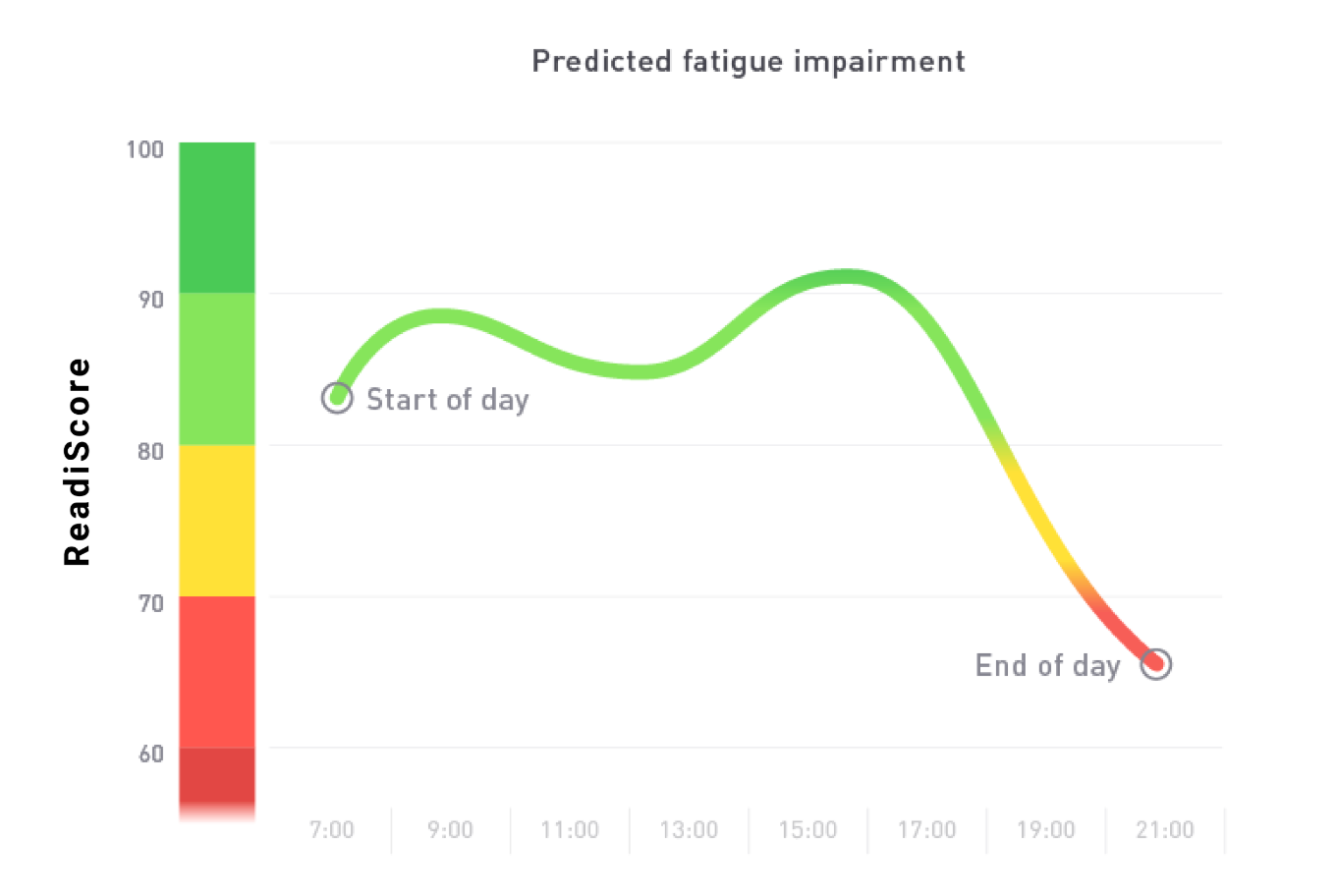
Reduce worker-caused incidents that can result in fines, increased insurance costs, or worse.
Worker fatigue doesn’t have to be an invisible menace anymore
Technology can now uncover hidden high-risk fatigue areas within your workforce that you previously had no other way of detecting.
With these new data-driven tools, you can quantify and predict workforce fatigue levels in areas such as:
- Which hours within each shift do workers become most at risk due to fatigue?
- Which days within a shift rotation are the most susceptible to worker fatigue?
- Are the changes to onsite worker sleeping quarters actually making a difference to fatigue levels and, ultimately, worker safety?
- How to predict and alert a worker when they’re entering their high-risk fatigue time on a shift?
In this article, you’ll learn how to implement a proactive and data-driven worker fatigue risk management program that utilizes sleep science-based software and wearable technology to make fatigue visible within your workforce.
And even better, you’ll see exactly where to allocate resources to have a focused and quantifiable fatigue risk management program.
Are your current worker fatigue reduction initiatives really working?
If you’re like most of the Health and Safety people we talk to, you know fatigue is an issue within your workforce.
You’ve implemented several fatigue-reduction initiatives but can’t quantify if they’re really making a difference as it’s difficult to see the “big picture”.
Sleep seminars, on-site sleeping quarters with blackout drapes and sound-proofing, and pre-shift questionnaires are all good – and we encourage you to continue doing these – but all this is subjective information.
You may also be using technologies like in-cab cameras that analyze a driver’s eye movement or other collision avoidance systems. But these are reactionary-based solutions that don’t identify or predict worker fatigue before it’s a danger.
Is all your fatigue knowledge subjective?
Without a data-driven solution, you’re really guessing how much fatigue there is in the workforce. You don’t have a way to quantify the situation, so you’re really just taking an educated guess or making decisions based on subjective knowledge on whether the initiatives in place are working.
“Without data-driven fatigue reduction initiatives, you’re not able to look back and say ‘fatigue went down 20%’, and you’re also not able to identify out of, say, 10 or 20 different groups of workers which groups or workers have the most fatigue. Is it the worker who raises his hand the most to say he’s tired? Is it the one who complains the most? Without a data-driven approach, it’s all just guesswork.”
– Rob Higdon – Senior Vice President, Product and Marketing, Fatigue Science

If you don’t have a quantifiable way of determining if your initiatives are making a difference, there’s no way of really knowing how much fatigue exists within your workforce.
Collecting quantifiable data will change everything.
How does a proactive, data-driven worker fatigue reduction plan work?
Using a sleep science-based software solution like Readi and wearable technology like devices from Fitbit, Garmin, or Fatigue Science’s ReadiBand, the system collects sleep metrics from workers to establish a fatigue score.
Initially, this will establish a baseline that will uncover where fatigue risk is highest in the organization, allowing you to focus reduction efforts there.
You’ll be able to analyze trend data to see if the initiatives you implement are making a difference to fatigue levels and ultimately worker safety.
The predictive aspect comes from analyzing each worker’s sleep data collected from the wearable device.
Using SAFTE, a validated biomathematical model, the system analyzes various sleep factors that can lead to things like sleep desynchronization and deprivation and from that can predict the probability of fatigue impairment for a worker.
Based on this analysis, the system alerts the worker through the wearable when they are predicted to enter a high fatigue state.
All this analysis boils down to a fatigue score known as the ReadiScore™, which both the worker and shift supervisor can see, allowing for immediate adjustments to mitigate worker safety risk.
How do you get started implementing a data-driven worker fatigue reduction plan?
Ideally, you’d want your entire workforce involved in the program to gain the widest and deepest look at fatigue within the organization, but you can start with ~200 workers or ~10% of your workforce to initially participate to collect usable sleep data.
How much can I expect to reduce fatigue within my workforce?
Every organization is different, but we’ve had clients who have seen a 21% reduction in workforce fatigue levels within 12 months.
They key is being able to see where fatigue is most prevalent – be it a particular shift, a certain day within a shift rotation, predicting when a worker is entering their specific fatigue red zone – and taking proactive corrective action to reduce risk.
“With a data-driven program in place, companies can identify problem areas like whether a particular shift pattern is detrimental to workers being able to fully recover on their days off. With this knowledge, they can make adjustments to the length of a shift or tasks on either the first day or the fourth day in, for example. These small changes make big differences in worker safety. You would have no idea this was an issue without the data to see it.”
– Gillian Taylor – Director, Customer Success, Fatigue Science
Stop believing there’s nothing more you can do about worker fatigue risk
Start gathering quantifiable data today. Being proactive will help reduce worker-caused incidents that can result in fines, increased insurance costs, or worse.




